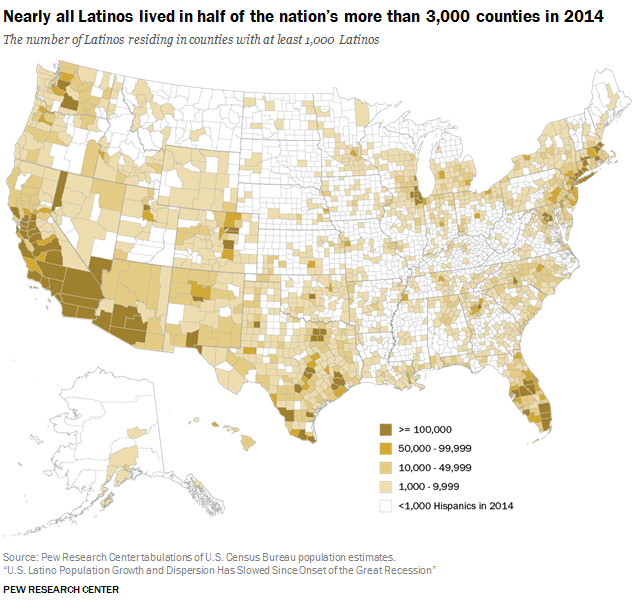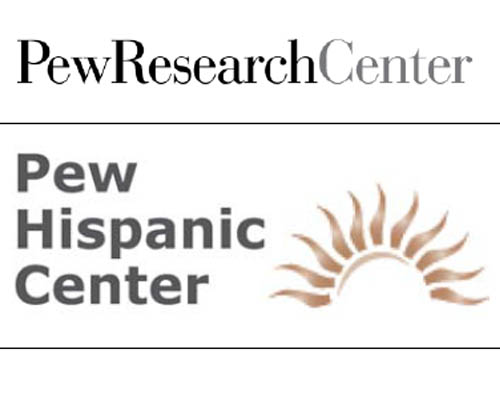U.S. Latino Population Growth and Dispersion Has Slowed Since the Onset of the Great Recession

*Lower Latino migration and birthrates mean Latinos are no longer the fastest growing group in the U.S. VL
 By Renee Stepler and Mark Hugo Lopez, Pew Research Center
By Renee Stepler and Mark Hugo Lopez, Pew Research Center
The nation’s Latino population has long been characterized by its rapid growth and by its wide dispersion to parts of the country that traditionally have had few Latinos. But a new Pew Research Center analysis of U.S. Census Bureau data finds that the growth and dispersion of the U.S. Latino population has slowed since 2007, when the Great Recession started, immigration from Latin America cooled and Latino fertility rates began to fall.
Between 2007 and 2014, the U.S. Hispanic population grew annually on average by 2.8% (its pace of growth has been an even slower 2.4% between 2010 and 2014). This was down from a 4.4% growth rate between 2000 and 2007 and down from 5.8% annually in the 1990s. As a result, the Hispanic population, once the nation’s fastest growing, has now slipped behind Asians (whose population grew at an average annual rate of 3.4% from 2007 to 2014) in its growth rate.
Read more NewsTaco stories on Facebook. >>
This slowdown has been driven by two, large demographic trends affecting the Hispanic community. READ MORE
[Map courtesy of Pew Research Center]

